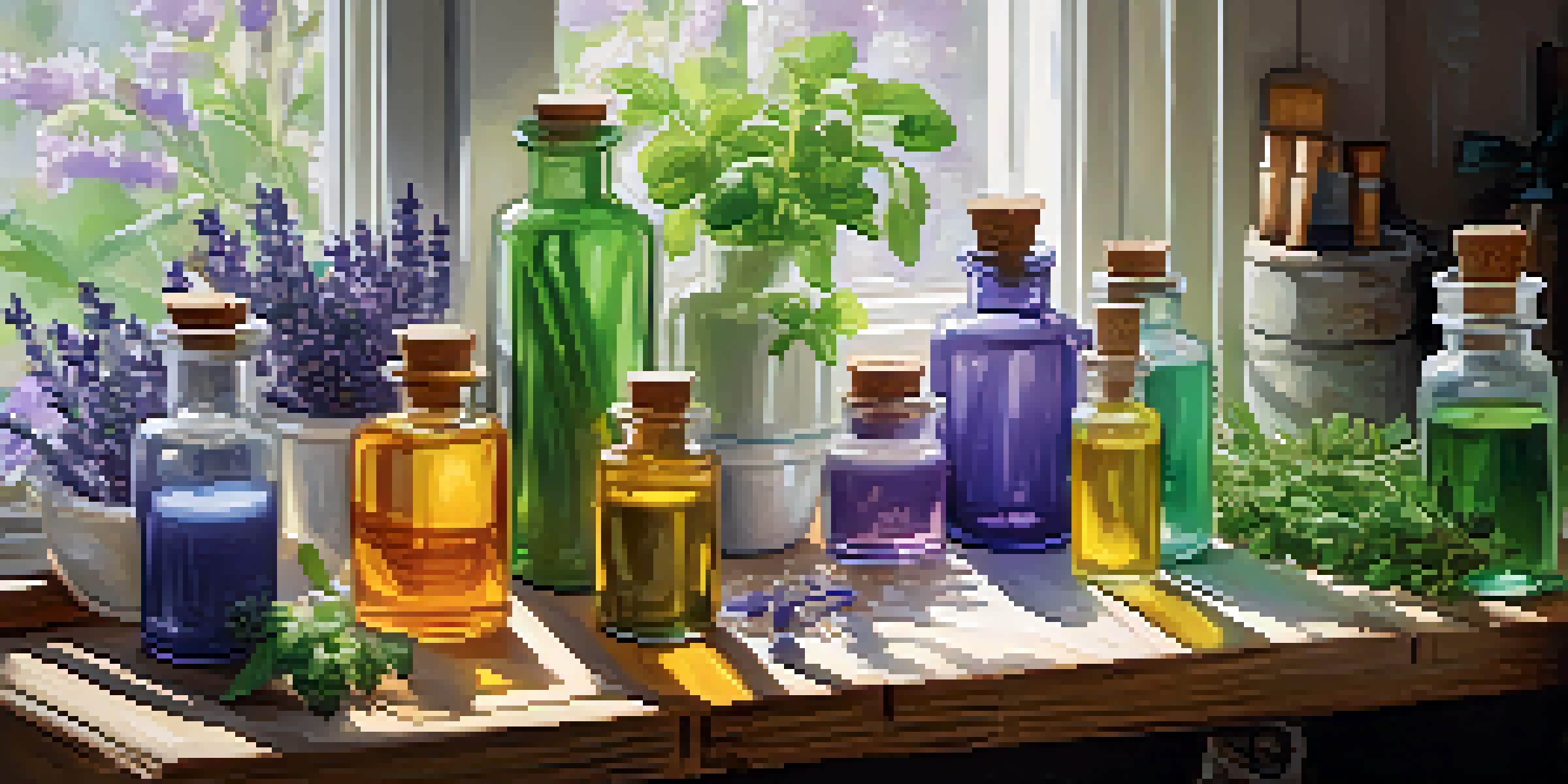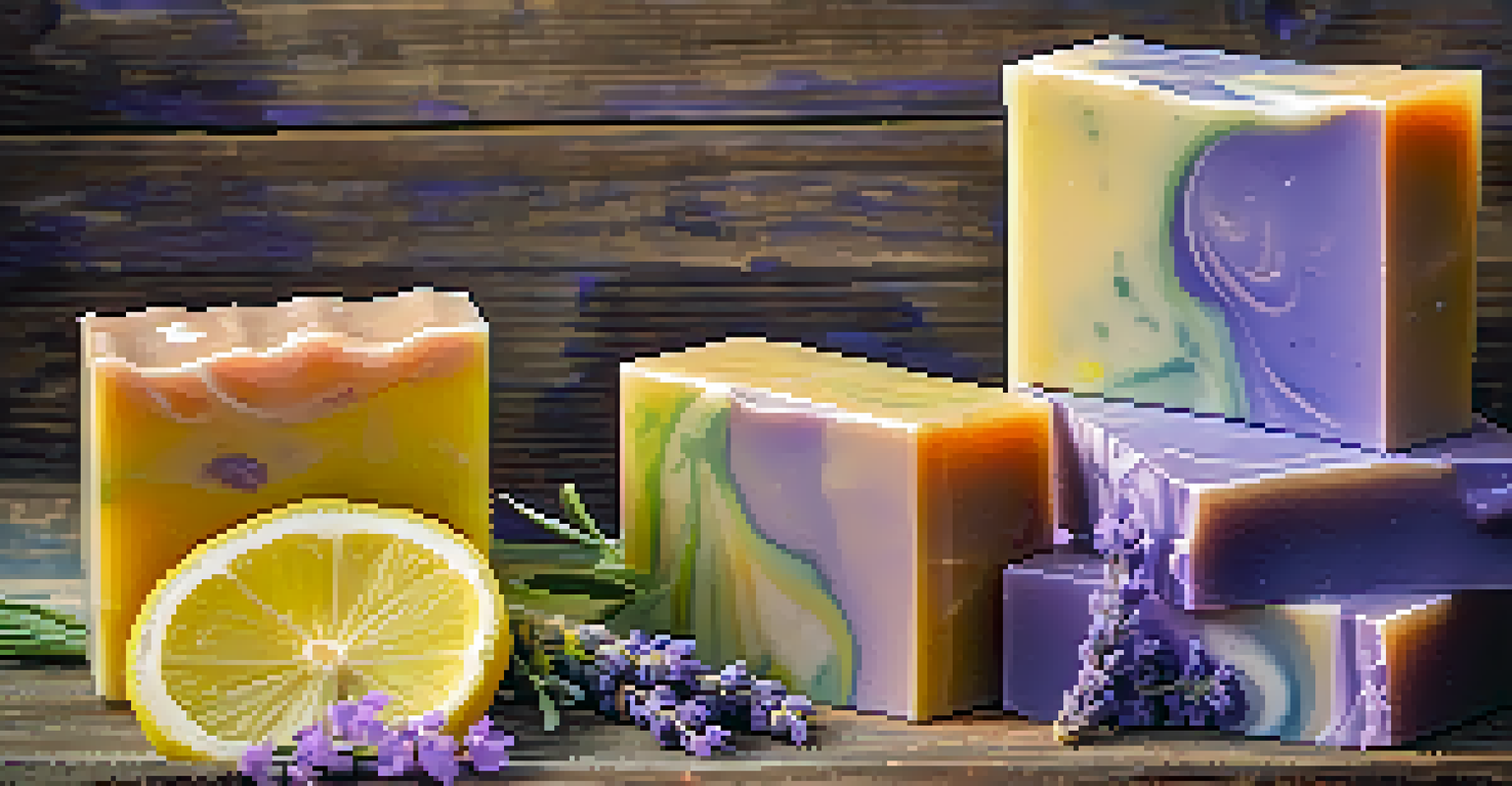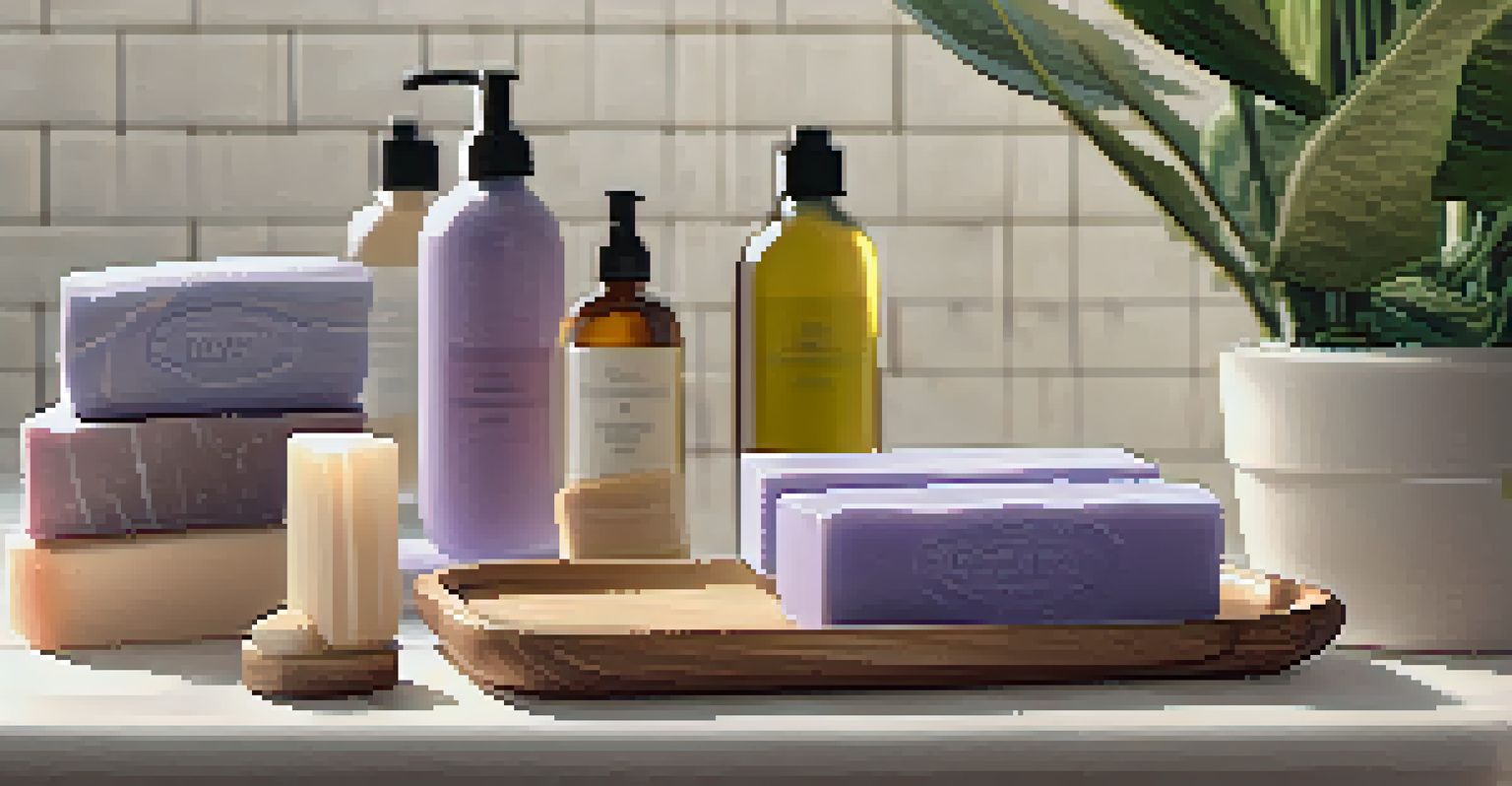Using Essential Oils in Soap Making: Benefits and Tips

Understanding Essential Oils: The Basics of Soap Making
Essential oils are concentrated plant extracts that capture the natural fragrance and properties of plants. In soap making, these oils play a crucial role in adding delightful scents and potential therapeutic benefits. When used properly, essential oils can elevate your homemade soap from ordinary to extraordinary.
Essential oils are the most powerful and effective way to harness the healing properties of plants.
They can also enhance the overall experience of using the soap, making it more enjoyable for you or your customers. With a range of essential oils available—like lavender, tea tree, and peppermint—the choices can feel overwhelming. But don’t worry, we’ll break it down into manageable pieces as we go along.
Understanding the different types of essential oils and their effects is the first step in harnessing their power in your soap recipes. Each oil has unique properties, allowing you to create soaps that not only smell great but also nourish the skin.
The Benefits of Using Essential Oils in Soap Making
Using essential oils in soap making offers a plethora of benefits beyond fragrance. For instance, some oils, like tea tree, have antibacterial properties that can help cleanse and purify the skin. Others, such as lavender, are known for their calming effects, making your soap a delightful addition to a relaxing bath routine.

Moreover, essential oils can enhance the skin benefits of your soap. Depending on the oil you choose, you can create products that soothe irritated skin, provide hydration, or even act as a natural insect repellent. This customization not only adds value to your soap but can also attract a wider audience.
Essential Oils Enhance Soap Benefits
Using essential oils in soap not only adds delightful scents but also offers therapeutic benefits for the skin.
In addition to their skin benefits, essential oils can also create an aromatic experience that elevates the mood. Imagine stepping into your bathroom and being enveloped in the uplifting scent of citrus or the calming aroma of chamomile—it's a simple pleasure that can transform everyday routines.
Choosing the Right Essential Oils for Your Soap
Selecting the right essential oils is key to achieving the desired scent and benefits in your soap. Start by considering the purpose of your soap and the experience you wish to create. For example, if you're aiming for a rejuvenating soap, citrus oils like bergamot or lemon are perfect choices.
The greatest gift of the garden is the restoration of the five senses.
On the other hand, if you want something soothing, lavender or ylang-ylang can work wonders. It's important to also consider any skin sensitivities or allergies. Always conduct a patch test with new oils to ensure they’re safe for your skin type.
Lastly, don’t hesitate to blend different essential oils to create a unique signature scent. Mixing oils can yield captivating combinations, like pairing eucalyptus with peppermint for a refreshing soap that invigorates the senses.
How to Measure Essential Oils for Soap Making
Precision is crucial when measuring essential oils for soap making. Generally, a good rule of thumb is to use about 0.5 to 1 ounce of essential oil per pound of soap base. However, this can vary based on the specific oil and your desired scent intensity.
To ensure consistency, use a digital scale for accurate measurements. Start with the lower end of the recommended range, and remember that you can always add more if needed. It’s easier to intensify a scent than to tone it down once it’s in the mix.
Choose the Right Oils Carefully
Selecting appropriate essential oils tailored to your soap's purpose can enhance both the fragrance and the user experience.
Also, consider the method of soap making you’re using. Cold process soap may require different measurements than melt-and-pour methods due to the saponification process. Always consult your soap recipe for specific guidelines on essential oil usage.
Common Mistakes to Avoid with Essential Oils
While using essential oils in soap making can be rewarding, there are some common pitfalls to avoid. One major mistake is using too much oil, which can lead to overpowering scents or skin irritation. Always stick to recommended guidelines to ensure a pleasant experience.
Another mistake is neglecting to research the properties of each oil. Some essential oils can cause photosensitivity, making your skin more susceptible to sunburn. This is particularly true for citrus oils, so it’s essential to educate yourself before incorporating them into your recipes.
Finally, remember to store your essential oils properly. Exposure to light and heat can degrade their quality. Keep them in dark, cool places to maintain their potency and fragrance for longer periods.
Safety Tips When Using Essential Oils in Soap Making
Safety should always come first when using essential oils in soap making. Start by performing a skin patch test to check for any potential allergic reactions. This step is crucial, especially if you are trying a new essential oil for the first time.
It’s also wise to dilute essential oils before using them, particularly for sensitive skin. While essential oils are natural, they are also potent, and using them in high concentrations can lead to irritation. Always follow recommended dilution guidelines for the best results.
Safety is Key in Soap Making
Always prioritize safety by conducting patch tests and following dilution guidelines when using essential oils in soap.
Lastly, if you’re pregnant or have specific health concerns, consult with a healthcare professional before using certain essential oils. Some oils are not recommended during pregnancy or may interact with medications, so it’s always better to be safe than sorry.
Incorporating Essential Oils into Your Soap Recipes
Now that you’re equipped with knowledge about essential oils, it’s time to incorporate them into your soap recipes! Start by choosing a basic soap recipe that suits your preferences—whether it’s cold process, hot process, or melt-and-pour.
Once you have your base ready, add the essential oils at the right stage of the soap-making process. For cold process soap, add them when the mixture reaches a light trace for optimal scent retention. For melt-and-pour methods, add them after melting the soap base to preserve the oils' properties.

Mix thoroughly to ensure an even distribution of the essential oils throughout the soap. After pouring your mixture into molds, let it cure or set as directed in your recipe. Soon enough, you’ll be ready to enjoy your aromatic homemade soap!